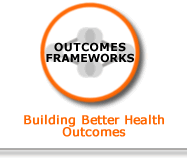Link through the outcomes (1b)
The accountable person will enable greater co-ordination between sectors, drive forward local implementation and ensure data is collected at a local level. Local data will inform needs-led services and workforce development and empower young people. This in turn will contribute to greater trust both within professions and services and between professionals/ services and young people, reduce stigma and enable staff to work more effectively to support the needs of young people.
Summary
Children’s Services Plans
The Children and Young People (Scotland) Act 2014 places a duty on each local authority and relevant health board to jointly prepare a Children’s Services Plan which is informed by live and local data. (1)
Views of young people
- There is highly processed evidence that young people identify a range of personal and service-based factors which influence their access to contraceptive and antenatal services.(2,3,4)
- NICE Public Health Guidance 51 and Clinical Guidelines 110 recommend that contraceptive and antenatal services are informed by the views of young people, young parents and local data.(5, 6)
- NICE Clinical Guideline 110 recommends the development of coordinated and comprehensive contraceptive service and antenatal services and greater partnerships working to improve access to antenatal services. (6)
- Review level evidence suggests that young parents have varied preferences in relation to their health, social and educational needs.(7) More coordinated services may help them to access appropriate information and advice to make choices appropriate to their needs and circumstances.
HIIA Note:
The evidence specifically includes research on the views of young people who were socially disadvantaged and excluded as well as young parents.
References
-
Scottish Parliament. Children and Young People (Scotland) Act 2014.Edinburgh: Scottish Parliament; 2014.
-
Baxter S, Blank l. Payne N et al. A review of the effectiveness and cost effectiveness of contraceptive services and interventions to encourage use of those services for socially disadvantaged young people: views review. Sheffield: University of Sheffield School of Health and Related Research (ScHARR); 2010. Available at :http://www.nice.org.uk/guidance/ph51/evidence (accessed 3 June 2015).
-
Owen J, Carroll C, Cooke J et al. School-linked sexual health services for young people (SSHYP): a survey and systematic review concerning current models, effectiveness, cost-effectiveness and research opportunities. Health Technol Assess 2010; 14(30).
-
National Collaborating Centre for Women’s and Children’s Health. Pregnancy and complex social factors: a model for service provision for pregnant women with complex social factors. Commissioned by the National Institute for Health and Clinical Excellence. London: Royal College of Obstetricians and Gynaecologists; 2010. Available at :http://www.nice.org.uk/guidance/cg110/evidence (accessed 3 June 2015).
-
National Institute for Health and Care Excellence. NICE Public Health Guidance 51: Contraceptive services with a focus on young people up to the age of 25. London: National Institute for Health and Care Excellence; 2014. Available at: http://www.nice.org.uk/guidance/PH51 (accessed 3 June 2015).
-
National Collaborating Centre for Women’s and Children’s Health. Pregnancy and complex social factors: A model for service provision for pregnant women with complex social factors. Clinical Guideline 110. Available at: http://guidance.nice.org.uk/CG110 (accessed 3 June 2015).
-
Harden A, Brunton G, Fletcher A et al. Young people, pregnancy and social exclusion: A systematic synthesis of research evidence to identify effective, appropriate and promising approaches for prevention and support. London: EPPI-Centre, Social Science Research Unit, Institute of Education, University of London; 2006.
|


